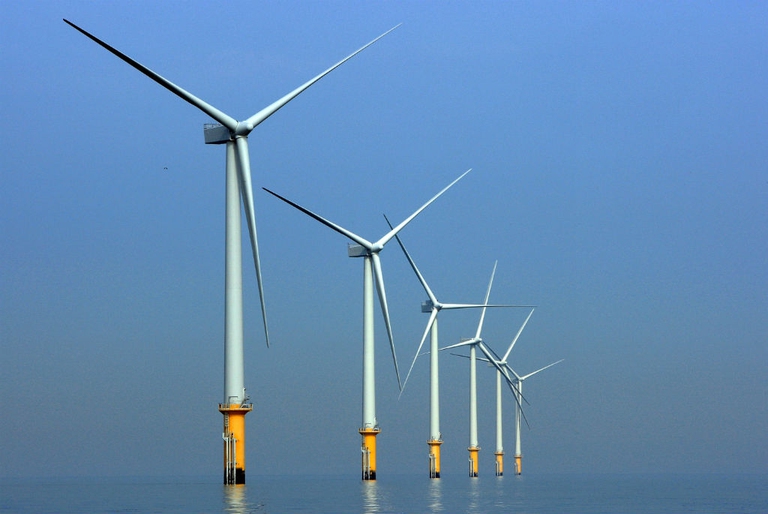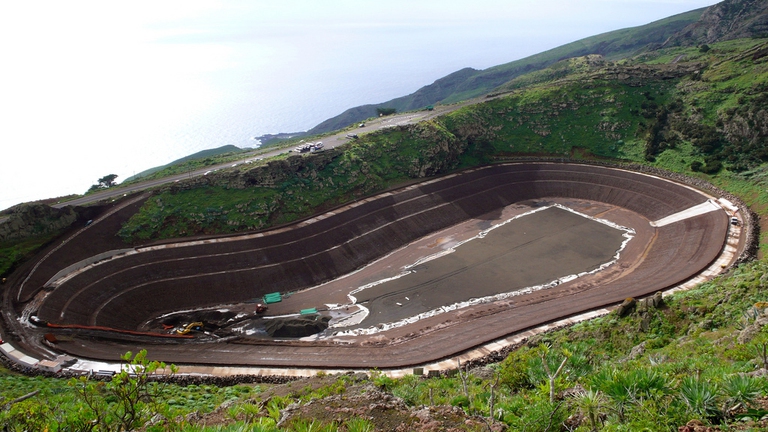
A group of experts in Tokyo suggested pouring radioactive water from Fukushima into the open sea. A marine biochemist explains the consequences of this absurd decision.
A poco meno di un mese dalla Cop21, le isole si candidano a diventare laboratorio per le rinnovabili, in prima linea per contrastare i cambiamenti climatici.
From Samso, Denmark, to the Azores. From Cape Verde to El Hierro. These are just some of the islands all over the world that made a clear choice: reducing the effects of climate change thanks to renewables, whilst demonstrating that available technologies can pave the way towards a carbon-free future.
An example is Graciosa, small island of the Azores with 4,000 inhabitants, which has invested in the storage of renewable energy produced from a plant combining solar and wind power, which is able to produce 70% of the island’s electricity need.
“Our objective is moving from 36.3% to 56.7% of electricity production from renewable sources by 2019,” said José Manuel Rosa Nunes, of the Azores government, at the Greening the Islands conference, held in Malta, where representatives of islands from all over the world met to debate on best practices and actions carried out to combat climate change. “The transformation of our energy system will reduce the use of fuel oil and diesel, resulting in a reduction in CO2 emissions, crucial factor to tourist regions rich in natural resources aiming at balancing their commercial activities”.
It is an investment worth 25 million euros that will lead to reduce oil consumption by 92,600 tonnes and CO2 emissions by 300,000 tonnes per year.
El Hierro, the smallest among Canary Islands, aims to run entirely on renewable sources, investing in hydroelectric and wind energy. It is an innovative system combining two sources, depending on needs and electricity availability: the hydroelectric plant is made of two artificial lakes realised on two natural craters, at different heights. With normal wind conditions, the wind power plant (11.5 MW) provides energy to the local population and surplus electricity is used to pump water from the lower hydroelectric basin to the upper one. During less windy days, the water is released down through a pipe connecting the two lakes, generating hydro-power. Such system allows the island saving 2 million euros per year.
“El Hierro is a perfect example of a public-private partnership, as well as of the way of considering islands to be labs for sustainable energy technologies demonstrations,” said Gonzalo Piernavieja Izquierdo of Islenet (Network of European Islands for Energy and the Environment).
Cape Verde is also ready for the energy revolution. Depending on fossil fuels for electricity production and sea water desalinisation, the island chose to build 4 wind parks (25.5 MW), which provide about one fourth of the country’s energy need. This investment leads to save 16,000 tonnes of diesel each year (in 2013 1.5 million dollars have been saved) and 176,000 tonnes of CO2.
Just a few weeks ahead of the UN Conference on Climate Change (COP21), islands demonstrate to be ready for the energy revolution, essential to effectively combat climate change.
Siamo anche su WhatsApp. Segui il canale ufficiale LifeGate per restare aggiornata, aggiornato sulle ultime notizie e sulle nostre attività.
![]()
Quest'opera è distribuita con Licenza Creative Commons Attribuzione - Non commerciale - Non opere derivate 4.0 Internazionale.
A group of experts in Tokyo suggested pouring radioactive water from Fukushima into the open sea. A marine biochemist explains the consequences of this absurd decision.
A federal court in Washington, D.C. has struck down the Dakota Access Pipeline, following years of campaigning by the Standing Rock Sioux tribe.
The Scottish island of Eigg is self-sufficient for its energy needs, relying almost entirely on renewable sources, especially thanks to a coordinated community effort.
President Magufuli in unmovable in going ahead with the Stiegler’s Gorge dam despite conservationists’ warnings of the damage it will cause the Selous Game Reserve’s ecosystem and wildlife.
A large dam along the Luangwa River in Zambia would have posed a serious risk to local people and wildlife, leading hundreds of thousands to oppose it. A call to which the government responded by halting plans to build it.
The first one megawatt solar power plant in the Chernobyl exclusion zone has become operational. This is the first step in a renewable energy development project promoted by the Ukrainian government in the area.
A tanker exploded at a gas and petrol station in Nigeria’s Nasarawa state on the 10th of September, killing 35 people and leaving some burned beyond recognition; 3 citizens had several spine and brain injuries, 2 of them are still on Intesive Care Units. Fela Habila , a local singer, is now stable and out of danger but
The largest tidal power plant in the world will be built in the Larantuka Straits. It will serve 100,000 people and help overcome some of the challenges of energy provision in Indonesia.
Robben Island’s solar energy micro-grid project will produce almost one million kilowatt hours of electricity annually, significantly reducing the cost and impact of buying diesel.









